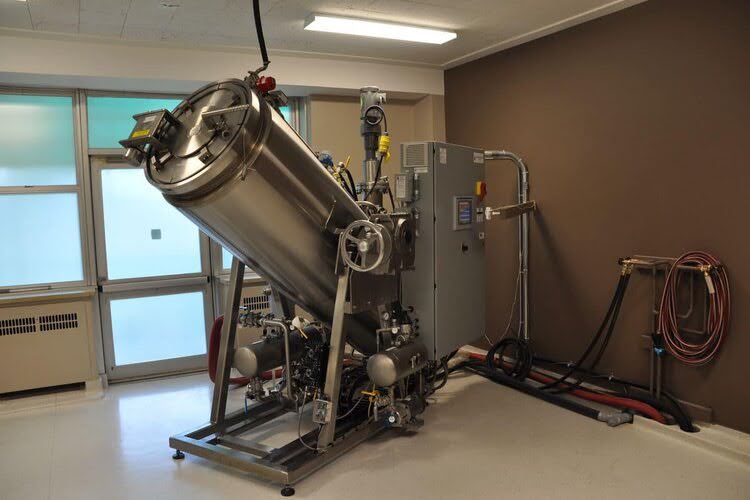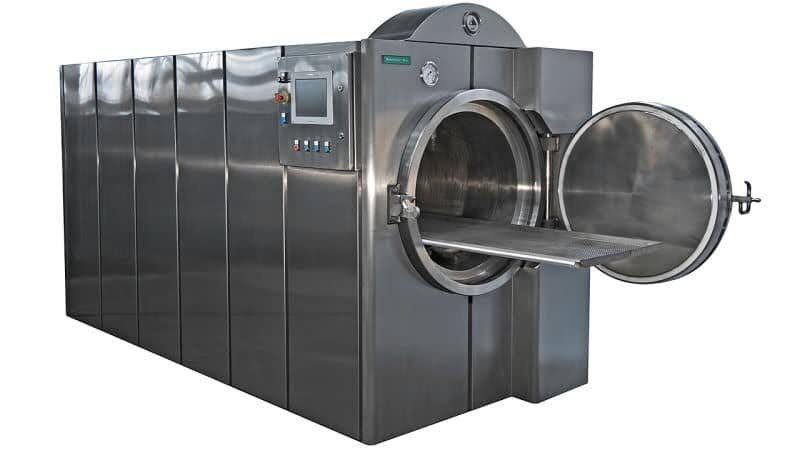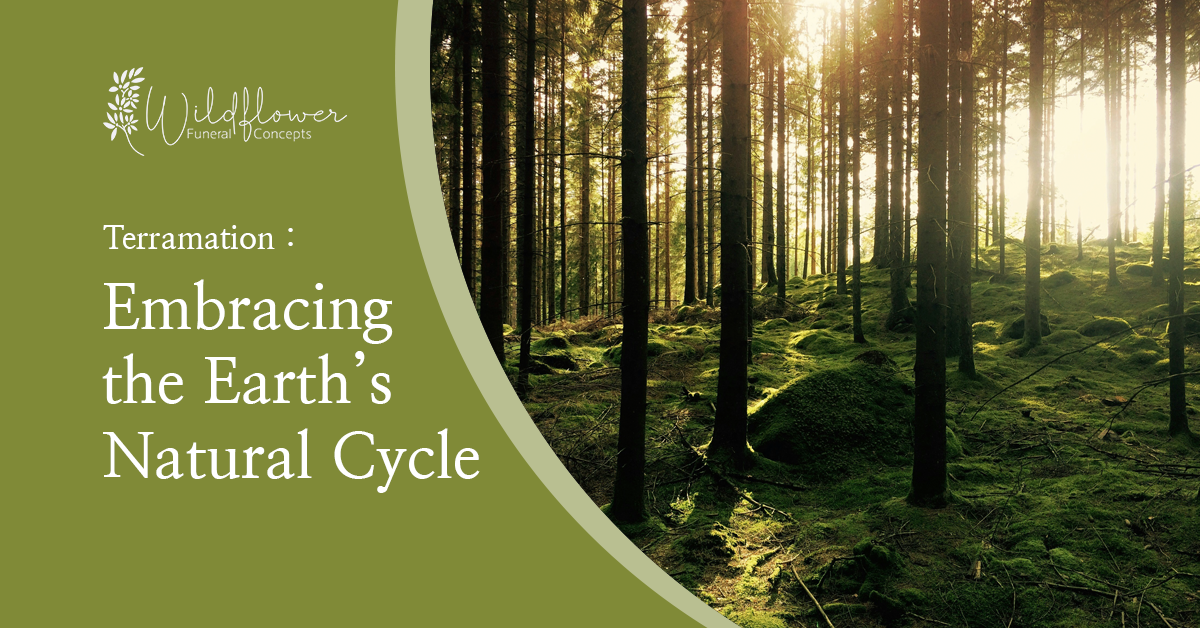For much of the last 100 years, we have had only two choices for what to do with our bodies when we are done with them – burial or cremation. For many, these two options don’t sit quite right. Fortunately we now have new disposition methods available to us. Methods that may be more aligned with our values and beliefs. As we consider ways to meaningfully and sustainably care for our bodies, one method, aquamation, is emerging as a compassionate environmentally friendly alternative.
Aquamation, also known as alkaline hydrolysis, water cremation, bio cremation, resomation, and green cremation is a gentle water based process that can honor the connection between life, death, and nature. For those seeking a responsible and respectful final act, aquamation may be the appropriate choice.
What is Aquamation?
Aquamation is a process which accelerates the natural decomposition that occurs in earth burial, allowing a body to return to its most basic elements in hours rather than years. The end result is very similar to cremated remains or “ashes.” Unlike flame-based cremation, which uses high temperatures and fire, aquamation relies on a combination of water, heat, and alkali. It is a gentle environmentally friendly process that may resonate with deeply held values.
The Aquamation Process
Aquamation is a simple process that consumes a small amount of electricity and has no harmful emissions. A body is placed into a specialized vessel which is filled with a mixture of approximately 95% water and 5% potassium hydroxide and/or sodium hydroxide, better known as lye. Chemically speaking, lye is a base. It is alkaline with a high pH. The opposite of an acid. Other common alkaline substances include soap, household cleaners, toothpaste, and baking soda.

Bio-Response Solutions Aquamation machine

Resomation Natural Water Cremation machine
The solution is heated to between 200 degrees and 300 degrees fahrenheit, depending on the kind of machine used. Higher temperature machines are pressurized to prevent boiling. Over the course of a few hours the warm water and alkaline solution breaks down all of the proteins in a body to their most basic elements. What’s left are bone fragments and a clean sterile liquid containing salts, sugars, amino acids, and peptides. There is no DNA or RNA left. Any diseases that may have been present, including prion based diseases like Creutzfeldt-Jakob and Mad Cow disease are eliminated in the process. This liquid is recycled through municipal wastewater treatment. It is important to note here that this liquid contains the exact same elements that go up the stack as pollutants during a cremation.
After the liquid is drained, the bone fragments are removed and any prosthetic implants, like hip replacements, pace makers, and dental implants are sorted out for recycling. Bones are dried, reduced to a fine powder, and returned to the family just like traditional cremated remains. While aquamated remains and cremated remains are similar, there are a few differences. First, aquamation yields about 20-30% more remains than cremation because there is no fire burning off elements from the bones. And aquamated remains are a bright white fine powder with a uniform consistency similar to powdered sugar. Unlike cremated remains, which vary in consistency from chunky to a fine powder, and are an ashen dusty grayish brownish color.
Environmental Benefits of Aquamation

For those who prioritize sustainability and environmental stewardship, aquamation offers a number of significant advantages. A notable benefit is the reduction in energy use. Aquamation consumes up to 90% less energy than flame-based cremation, making it an eco-friendly choice for those concerned about their environmental impact. And, the energy used comes from electricity, not natural gas.
In addition to being energy-efficient, aquamation also produces zero harmful emissions. One cremation however releases approximately 534 pounds of carbon dioxide into the atmosphere along with other pollutants including carbon monoxide, nitrogen oxides, sulfur dioxide, fine soot, and mercury from dental fillings. By contrast, aquamation does not involve combustion, meaning there are no emissions of harmful gasses or pollutants. This makes aquamation a cleaner and greener option.
And, since aquamation uses water, a substance associated with purification, renewal, and life, it can represent continuity, flow, and return— fitting symbolism for a process that can honor the natural cycle of life and death. For many, the use of water in aquamation resonates deeply, offering a connection to nature that feels both spiritual and comforting.
Restrictions
Because the alkaline solution used in aquamation will only break down animal proteins, and will not breakdown plant proteins and synthetic fibers, a body often goes into the aquamation process just as they came into the world – unadorned. A body cannot be dressed in regular clothes and cannot be placed in a container. Nor can it be accompanied by flowers. A shroud made entirely of animal fibers, such as silk, wool, and leather can be used, but only if it does not contain any synthetic or plant based materials, like nylon or cotton threads.
A Meaningful Farewell
Beyond its environmental benefits, aquamation allows for creating personal and meaningful farewells. Aquamated remains, sometimes referred to as “ashes,” can be memorialized in various ways, just like cremated remains. Whether scattered in a special location, interred in a cemetery, placed in an urn, used in a memorial garden, mixed into paint or tattoo ink, blown into beautiful works of glass art, pressed into stone keepsakes, packed into fireworks or launched into orbit, the options for honoring a loved one’s legacy are diverse and customizable.
Many people choose to incorporate aquamated remains into eco-friendly burial options, such as planting a tree in a loved one’s memory or creating a memorial garden that nurtures life and growth. Aquamated remains are made up mostly of calcium phosphate, which lowers soil pH in high concentrations. When creating a living memorial it is suggested that aquamated remains be mixed in with compost and/or potting soil and a pH balancer to match your region and the types of plants being used. By returning the remains to the earth in a natural and regenerative way, you can create a lasting legacy that continues to give back to the planet.
Choosing Aquamation for a Loved One

In a world where environmental consciousness is increasingly important, aquamation provides a thoughtful and responsible way to honor the legacy of a life lived with intention, while giving back to the planet. It is a choice that speaks to the values of stewardship, compassion, and connection—values that are at the heart of healing relationships with life, death, and the natural world.
Visit Wildflower Funeral Concepts for more information about aquamation and how it can provide a meaningful, eco-friendly farewell. Together, we can create a legacy that honors life, death, and the world we share.







